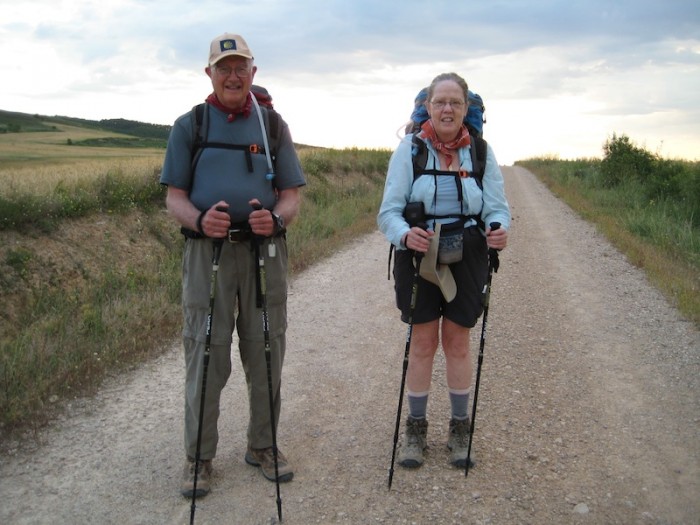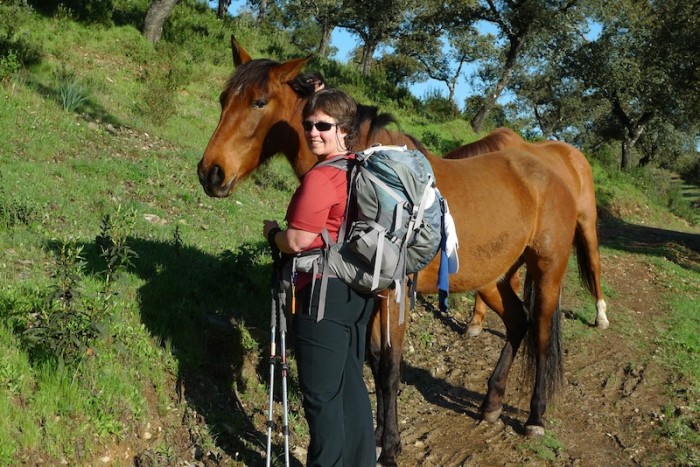
The Camino de Santiago, a network of trails stretching for hundreds of miles across Spain, has been a destination for religious pilgrims since the Middle Ages. All pathways on the Camino lead to a cathedral in Santiago de Compostela, where, many believe, Jesus’s apostle Saint James lies. But it’s not just for pilgrims anymore.
A growing number of tourists are trekking the camino each year.The number of tourists on the Camino increased by 10% from 2012 to 2013, according to French pilgrimage organization Au Coeur du Chemin. The number of travelers from the U.S. went up by nearly 50% in the same period.
Travelers from the Puget Sound area, where backpacking is an important part of the culture, are especially drawn to the Camino.
In fact, the Puget Sound chapter of American Pilgrims on the Camino, founded in 2010, was the first local chapter established in the United States.
Marcia Shaver, an artist and author from Redmond, is a part of the chapter and has traveled the Camino twice since 2008. She started out on the Camino Francés, a 500-mile pathway, popular with tourists, that winds from the Pyrenees Mountains bordering France to Santiago de Compostela, Spain.
The journey, she said, was no “walk in the park.” According to Shaver, starting at St. Jean Pied de Port on the Camino Francés, one has to climb almost 4,000 feet to get to Roncesvelle, a city 24 kilometers away.

But she says the reward is worth it. “The sense of personal empowerment you feel when you step into that square at the cathedral in Santiago is overwhelming,” she said. And given the frequency of pilgrim lodging (albergues) every few miles along the path, she said it is possible for people of all athletic levels to walk the Camino.
Besides the physical challenge, Shaver also found the journey spiritually transformational. “By the time you get to the end, you realize you’ve changed a huge amount in your perspective, and reentry into real life is hard,” she said. “Your family and friends haven’t been on this journey of the spirit and the mind and the body, and so they don’t understand. And that’s where the [American Pilgrims] Camino group is fun.”
Dick Carter, 84 years old, can relate. He has traveled a different part of the Camino with his wife every year since 2008. As a founding board member of the Puget Sound chapter, Carter has seen local interest in the Camino grow over the years.
“Every year, there’s a number of new people from the area that walk the Camino and a number of new people from the area that show up for the chapter event…so it’s definitely growing,” he said. Carter believes this growth is due to the wide appeal of pilgrimages, attracting people who seek everything from religious fulfillment to athletic accomplishment.
He also thinks there’s a particularly strong connection between Seattle and the Camino. “Recently, the Seattle chapter has formed a working relationship with an albergue on the Camino,” he said. “We have raised money for them and we supply hospitaleros [albergue workers] for them.”
The recent rise in interest also coincides with the release of two films about the Camino. The first, called “The Way,” was released in 2010, and the other, “Walking the Camino,” in 2013.

Shaver thinks these films are strongly linked to growing interest in the Camino.
“Starting when that [film] came out, the number [of people interested] just skyrocketed,” she said.
Shaver leads informational sessions for Seattleites planning to walk the Camino. “I always ask how many people have seen ‘The Way,’ and I would say 90 percent of them raise their hands.”
Lydia B. Smith, the director and producer of “Walking the Camino,” agrees that “The Way” was a big factor in driving up tourism on the Camino. But she also believes people’s outlooks on life are changing.
“I think there has been a shift in our society right now where people really want more meaning in their lives instead of just consumerism and things,” she said. “Like, why am I here on this planet, and what’s the point of life, and where am I going? I think time on the Camino really allows people to think about those things.”


Hi Shirley, great story, my husband and I walked the Camino Francis about 18months ago, and it is hard to imagine walking the trail at 84 years of age! we are currently walking the Via la Plata, a camino trip from Seville to Santiago de Compostela and the trip is quite different from the Camino Francis it has many things in common. The roads and trail are much quieter, few people and there is a closer connection to the Spanish people that we have met. On the previous trip, it was the other pilgrims and walkers that we built a connection with. so far we are enjoying our journey, and I love reading about other people’s stories from the camino.
I think many people, like me, set out on the Camino to “think” about a lot of things. If they are lucky they end up living in the day and the thinking becomes less and less.
Going from a big city to walking in the countryside of Spain illustrated to me how much of my thinking is not required. All the best, Leslie